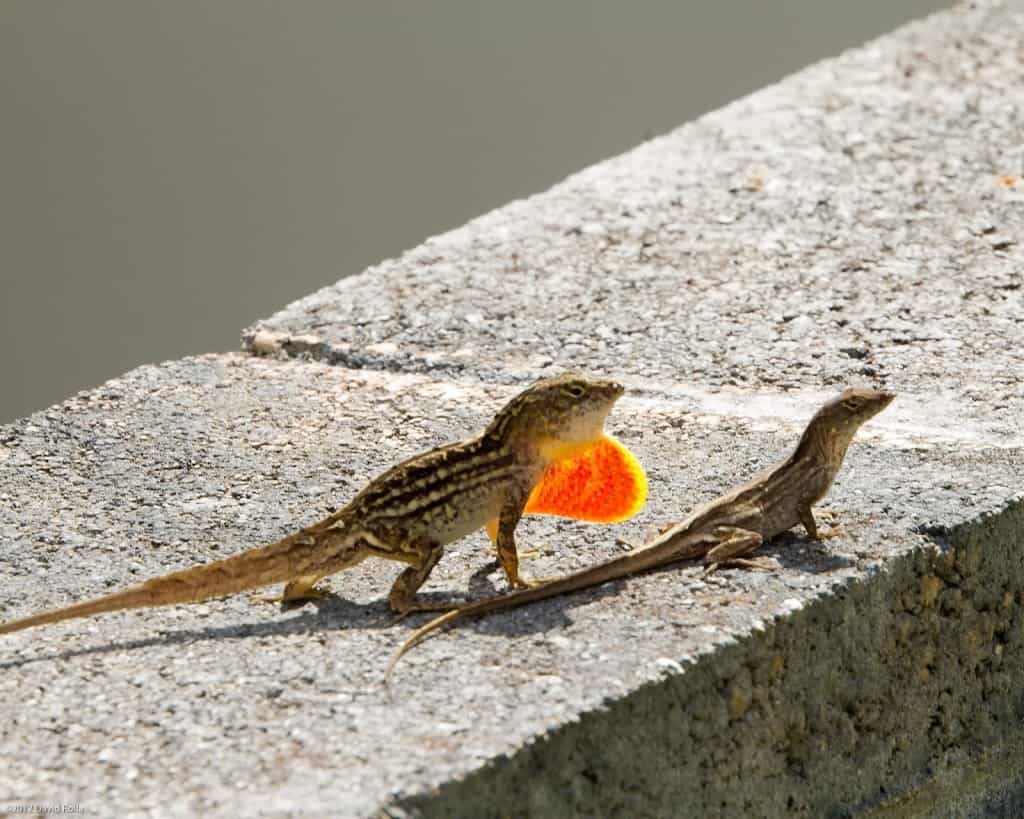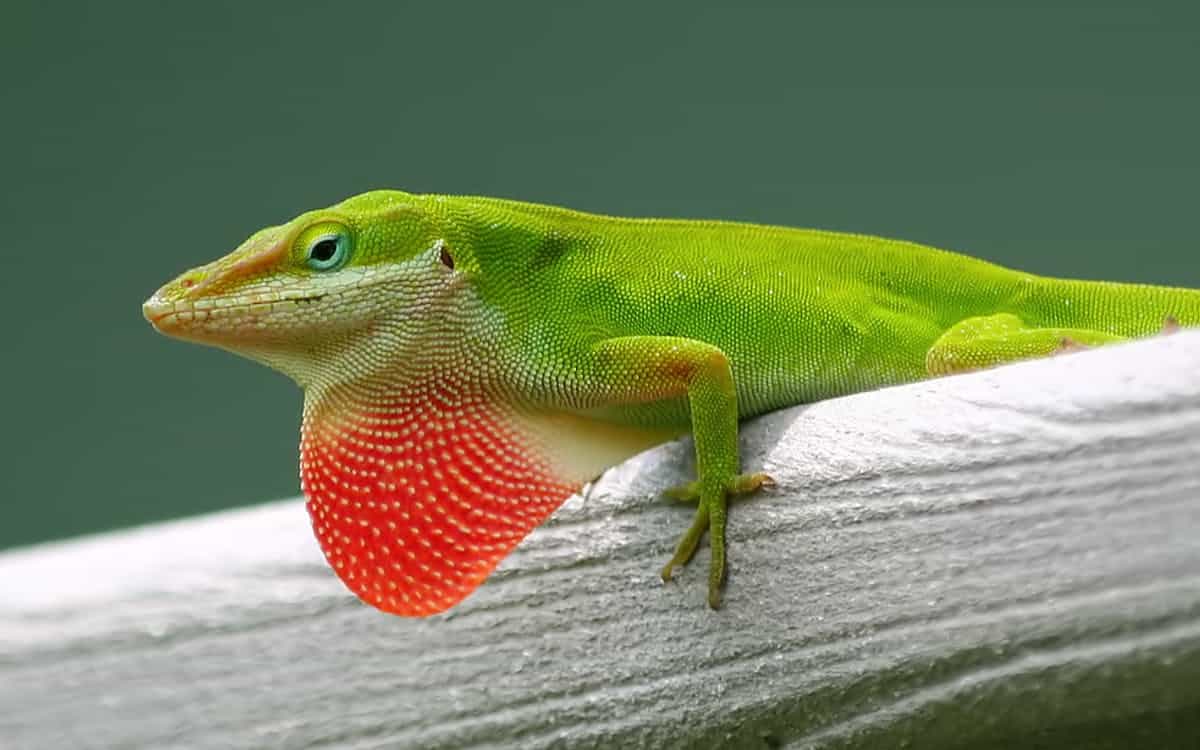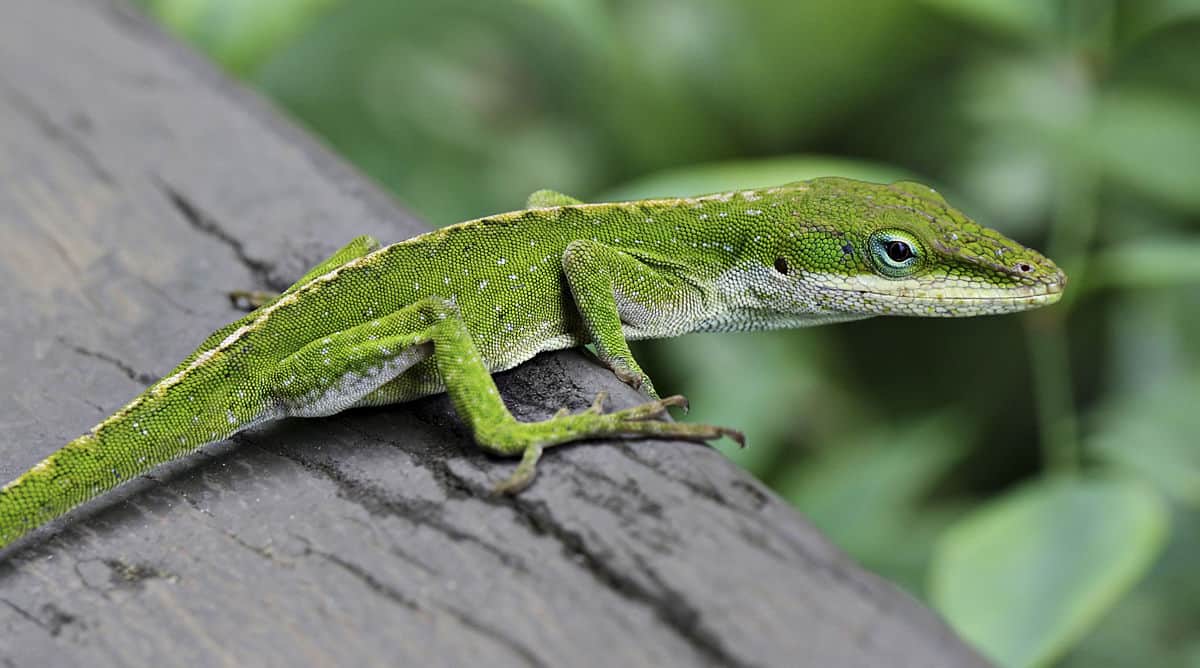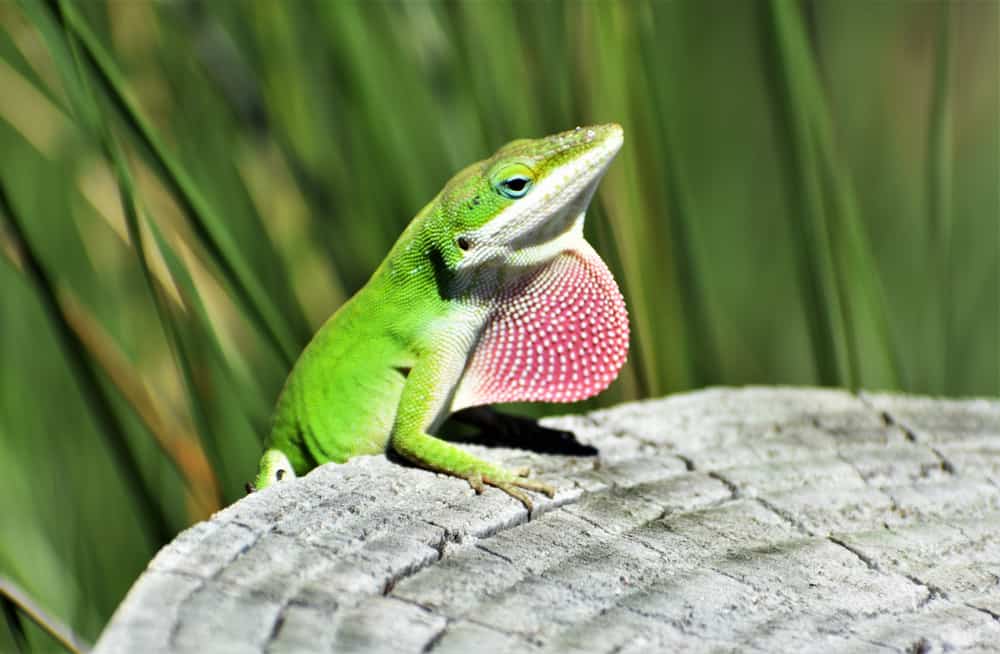If you live in a warm and humid climate, you will be familiar with anoles. If you don’t, but venture out to these types of places during the holidays, then you will more than likely have seen them scurrying around your hotel complexes or apartments.
Anoles are part of the Lizard family, and are typically green or brown in color but don’t let that make you believe that there are only a couple of species in the Anole family. In reality, there are thought to be over 350 types of Anole species on the planet.
In this article, you will learn more about these lizards from what they eat to how they hunt, and everything in between.
Characteristics of anoles
Despite there being so many different types of anoles across the planet, the habits and characteristics of these lizards are largely the same across the board. They all have pointed snouts and thin limbs and many of them are able to alter their skin color, much like other reptiles such as chameleons and geckos.
Many anoles spend the majority of their time on tree trunks, meaning they are hard to see. However, there is one type of anole that does spend its time in grassy areas and bushes. These are the types of anoles that you will likely have seen either during your travels or at home if you live in a climate and location where they are prevalent. These types of anoles are simply known as ‘green anoles’.
Green anoles can be found in the Southeastern United States and can reach around 9 inches in length. If you spot a green anole with a lump on their throat area then what you are seeing is a male. The lump in question is known as a ‘dewlap’ and they are used by males to assert their dominance over a particular area and to attract females when it’s time to mate.
One of the coolest things about these dewlaps is that they are unique to each and every anole. They can be a great way to identify a certain anole as the markings on the dewlaps are different from one anole to another. They are so varied that some may have pink markings while others will have brown.
As you will know if you have ever seen one of them, anoles are sharp movers and this is due to their enlarged finger and toe pads. These pads are covered with tiny hooks which allow them to grip on almost anything, meaning they can hop and move around quickly on any surface.
These features also allow them to climb up almost anything which is why you will often see them chilling on the side of a wall or scurrying up a tree trunk. A lot of them sleep on branches at night so they need this incredible grip to not only get there but also stay balanced while recharging their batteries.
The species of anoles
As mentioned earlier, there are over 350 types of anoles in the world, living mainly in the United States and the Caribbean. We won’t bore you by going through each and everyone, but there are five key types worth getting to know:
- Anolis carolinensis (known as the green anole) – We’ve already touched on this species. Still, just to recap, they are seen more on the ground level than any other anole and are native to the South East of The United States of America.
- Anolis equestris (known as the knight anole) – These beasts are the largest of all anoles, growing up to 18cm in length. They are native to Cuba but cannot stand the cold, with many of them falling to the ground from tree branches when winter kicks in.
- Anolis sagrei (known as the brown anole) – These are a very invasive type of anole that often outcompetes green anoles and displaces them from their habitats. This may be a reason why green anoles have adapted to live more on ground level.
- Anolis cybotes (known as the bigheaded anole) – These are exactly what it says on the tin: anoles with very large heads. They are native to Haiti and the Dominican Republic and are typically brown in color.
- Anolis garmani (known as the Jamaican anole) – This is another large anole native to Jamaica. The coolest thing about these anoles is that they change color depending on the time of day. During daylight, they are green but when nightfall comes, they turn dark brown.
What do anoles eat?

Due to the size of the average anole, it will come not come as a surprise to you when I tell you that they don’t prey on other mammals. Instead, they are insectivorous meaning their diet consists only of various different insects.
They aren’t the type to try and punch above their weight and aim for insects that are typically smaller than them. Aside from that, they aren’t particularly fussy and will eat anything from a slug to a butterfly. They go on the hunt for food regularly, but only need to eat 3-5 insects a day to keep themselves functioning correctly.
Despite being insectivores, if they are struggling to find food then have been known to drink nectar and eat certain types of grains and seeds. However, this really is considered to be a rare occurrence.
Scarily enough, there have also been sightings of larger anoles eating baby lizards. Again, this is considered to be incredibly rare but maybe as they continue to evolve this will become more the norm and anoles will evolve into carnivores. For now, though, the general diet of an anole is as follows:
- Spiders
- Crickets
- Beetles
- Locusts
- Flies
- Butterflies
- Slugs
- Grasshoppers
- Worms
- Ants
- Termites
One thing worth mentioning is the fact that an anoles diet will vary slightly depending on the species in terms of the size of the insects they eat. For example, knight anoles are more likely to go for crickets, locusts and grasshoppers, while green and brown anoles are more likely to go for ants, flies and spiders.
How do anoles hunt?

The hunting methods of anoles will vary slightly from species to species but generally speaking they all follow similar hunting patterns.
The first thing worth mentioning is that despite the fact that many anoles can change colors, this isn’t thought to be a hunting mechanism. The majority of them have no control over when they change colors and even those that don’t do it to assist with hunting. Having said that, their colors do unintentionally help them because they can keep them camouflaged in certain scenarios.
Anoles typically patrol an area of 1 meter cubed and usually they will go in a pack containing two females and a female. There is nothing too complex about their approach, with a large part of their tactic simply just sitting and waiting for prey to make a move and then acting from there.
They will sit still and use their independently moving eyes to spot prey from all angles. Once they have spotted an insect they fancy, they will then stalk them until they make the first move. Once they have done that, the anole will move into striking distance and pounce immediately.
From that point, the anole will use its claws to grip on its prey and then bite down on it. They won’t waste much time biting and chewing and will end up swallowing all insects early whole. At least their prey doesn’t suffer that much!
In terms of when they go hunting, anoles typically head out in the middle of the morning. The only times this will change is if it is an incredibly hot day, in which case they will head out in the evening when the temperature starts to drop.
Can you keep anoles as pets?
While it would be unreasonable to expect all 350+ species to be eligible as pets there are plenty of anole species that you absolutely can keep as pets. The most common type of anole that people keep as pets are green anoles, but make sure to buy one from a reputable pet store, rather than just take one from the wild.
They are said to be a good first pet if you are looking to buy more reptiles in the future due to the fact they aren’t as high maintenance as other reptiles such as snakes and geckos.
With that in mind, you do still need to care for them and their vivariums need to meet certain humidity and heat regulations. On top of that, you of course need to make sure they have enough space to roam around and leafy areas to relax.
As green anoles like to stay in packs, you should consider getting more than one to ensure that they are as comfortable as possible in the vivarium.
How to keep them healthy

Keeping pet anoles healthy involves more than just providing them with the correct diet – you will also need to ensure that they are living in an appropriate climate.
With that in mind, you need to produce a semi-tropical environment in the vivarium. Look to engineer temperatures of around 80 F for 14 hours in the day and then drop it by 15 F at night time. Don’t try and cheat by using hot rocks as a heat source because that will only result in them getting burned.
In terms of water, anoles aren’t going to lick up a bowl of water as a pet cat or dog would. In the wild, they lick droplets off leaves so you’ll need to fill the vivarium with various plants and mist the tank daily to create this moisture.
Finally, use the list of food items we provided earlier when it comes to feeding time. Feed them 3-5 times a day with insects the size of the anole’s head.
FAQS
1. How often do anoles eat?
Anoles eat throughout the day, most frequently in the morning on a normal day but in the evenings if it’s a particularly hot day. They look to eat 3-5 insects each day and that is enough to keep them going.
2. How do anoles drink?
As anoles live in humid climates they utilize the moisture that gathers on leaves and branches. Additionally, there is typically a lot of rainfall in the Caribbean (where many of them reside) so they never go short regarding the water supply.
3. Do anoles eat fruit?
Anoles will only typically eat fruit, or anything other than insects for that matter if they are at the absolute desperation stage. As in, if they are struggling to find or successfully hunt any of their usual prey then they make up berries from trees or things like seeds and wheat.
4. How long do anoles live?
The lifespan of the typical anole depends on whether they are in the wild or if they are being kept as pets. If they are living in the wild, they rarely live longer than three years due to the fact they run the risk each day of a) not being able to find enough food and b) being hunted themselves by predators such as birds and snakes.
As pets, they can live for up to six years due to the fact they don’t have to hunt, as you provide all of their food for them, and there are no predators lurking around your house waiting to eat them.
Conclusion
As you can see, these lizards are a kind of complex reptile with hundreds of different species among them. In terms of their diet, they eat primarily insects but do dabble with other food sources occasionally if times are tough.
They are a cool animal to have as a pet, but please do consider the work that you have to put into their habitat/vivarium before purchasing one because they do need very specific conditions in under to thrive.
